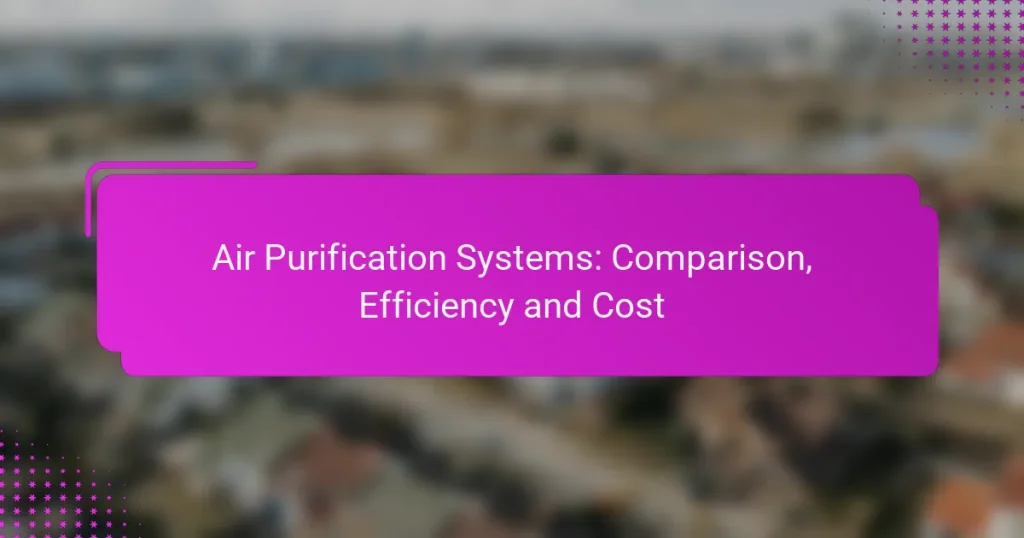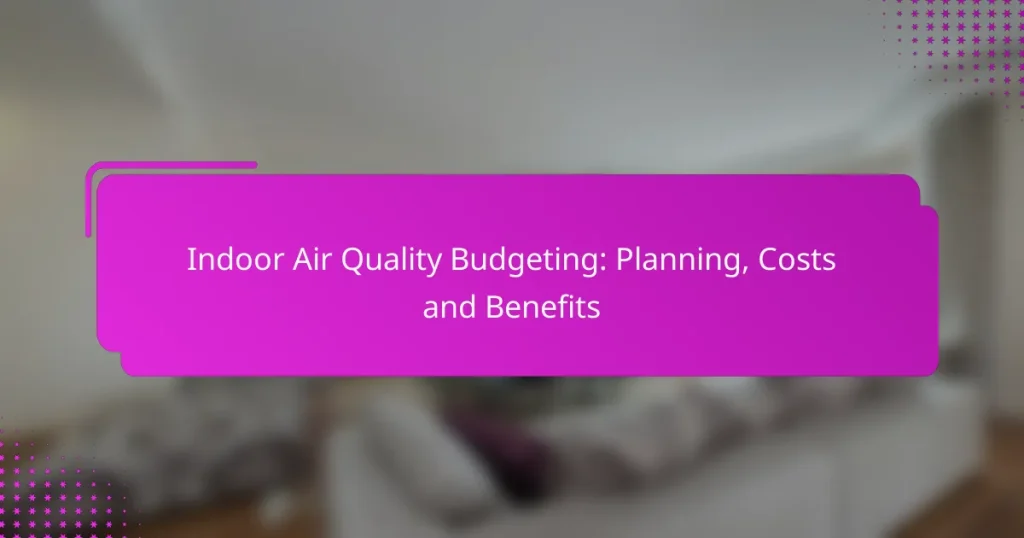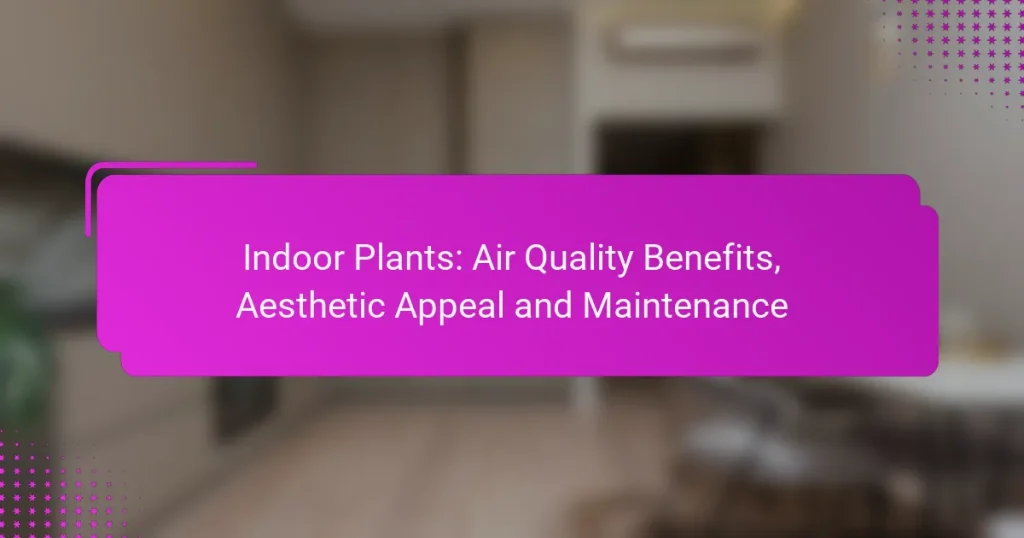Sustainable home design consulting focuses on improving indoor air quality through eco-friendly materials and practices. By reducing harmful pollutants and optimizing ventilation, homeowners can create healthier living environments, particularly in urban areas with high outdoor air pollution. This approach not only enhances health and comfort but also boosts energy efficiency and property values.
Indoor Air Quality Budgeting: Planning, Costs and Benefits
VOCs: Sources, Impact and Mitigation Strategies
Non-Toxic Paints: Selection, Safety and Aesthetic Value
Indoor Plants: Air Quality Benefits, Aesthetic Appeal and Maintenance
How can sustainable home design improve indoor air quality in Los Angeles?
Sustainable home design can significantly enhance indoor air quality in Los Angeles by utilizing eco-friendly materials and practices. This approach reduces harmful pollutants and creates a healthier living environment, which is especially important in urban areas with high levels of outdoor air pollution.
Use of low-VOC materials
Low-VOC (volatile organic compounds) materials are essential in sustainable home design as they emit fewer harmful chemicals into the air. When selecting paints, adhesives, and finishes, opt for products labeled as low-VOC or zero-VOC to minimize indoor air pollution.
In Los Angeles, where air quality can be compromised, using low-VOC materials can lead to a noticeable improvement in the air you breathe at home. Consider sourcing materials from local suppliers to reduce transportation emissions and support the local economy.
Incorporation of natural ventilation
Natural ventilation enhances indoor air quality by allowing fresh outdoor air to circulate while expelling stale air. Design features such as strategically placed windows, vents, and skylights can facilitate this process, reducing the need for mechanical cooling and heating.
In Los Angeles, where the climate is generally mild, maximizing natural ventilation can be an effective way to maintain comfort and improve air quality. Ensure that windows are operable and consider installing screens to keep out pests while allowing airflow.
Installation of air purification systems
Air purification systems can significantly improve indoor air quality by filtering out pollutants, allergens, and particulate matter. When choosing a system, look for HEPA filters, which are effective at capturing small particles, and ensure the system is appropriately sized for your home.
In urban areas like Los Angeles, where outdoor air quality can fluctuate, having a reliable air purification system can provide peace of mind. Regular maintenance, such as changing filters every few months, is crucial to ensure optimal performance and air quality benefits.
What are the benefits of improving indoor air quality?
Improving indoor air quality (IAQ) offers significant benefits, including enhanced health, increased energy efficiency, and higher property values. By addressing pollutants and optimizing ventilation, homeowners can create a healthier living environment while also saving on energy costs.
Enhanced health and well-being
Improved indoor air quality directly contributes to better health and well-being. Reducing exposure to allergens, mold, and volatile organic compounds (VOCs) can lead to fewer respiratory issues, allergies, and other health problems.
To enhance IAQ, consider using air purifiers, maintaining proper humidity levels, and ensuring adequate ventilation. Regularly changing air filters and using non-toxic cleaning products can also significantly improve the air you breathe indoors.
Increased energy efficiency
Improving indoor air quality can lead to increased energy efficiency in your home. Proper ventilation systems and insulation help maintain comfortable temperatures, reducing the need for heating and cooling, which can lower utility bills.
Consider conducting an energy audit to identify areas where air leaks or poor ventilation may be affecting efficiency. Sealing gaps and upgrading to energy-efficient appliances can further enhance both IAQ and energy savings.
Higher property value
Homes with better indoor air quality often see higher property values. Potential buyers are increasingly aware of the importance of a healthy living environment, making homes with good IAQ more attractive in the real estate market.
Investing in improvements such as advanced HVAC systems, air filtration, and sustainable building materials can yield a good return on investment. Highlighting these features during a sale can help justify a higher asking price.
What sustainable design practices enhance air quality?
Sustainable design practices that enhance air quality focus on improving ventilation, reducing pollutants, and integrating natural elements. These strategies not only promote healthier indoor environments but also contribute to overall well-being and comfort.
Green building certifications
Green building certifications, such as LEED or BREEAM, provide frameworks for assessing the sustainability of a building’s design and operation. These certifications often include criteria related to indoor air quality, such as the use of low-VOC materials and efficient ventilation systems.
To achieve certification, consider engaging with a consultant who specializes in sustainable design. They can guide you through the requirements and help you implement best practices that meet certification standards, ultimately improving air quality.
Use of biophilic design elements
Biophilic design incorporates natural elements into indoor spaces, which can significantly enhance air quality. This includes the use of plants, natural light, and organic materials that help purify the air and create a more pleasant environment.
Incorporating plants, such as snake plants or peace lilies, can improve air quality by absorbing toxins and increasing oxygen levels. Aim for a variety of plants to maximize benefits and consider their maintenance needs to ensure long-term effectiveness.
Implementation of moisture control strategies
Moisture control is crucial for preventing mold growth and maintaining healthy indoor air quality. Effective strategies include using dehumidifiers, ensuring proper ventilation, and selecting moisture-resistant materials in construction.
Regularly monitor humidity levels to keep them between 30% and 50%. This range helps prevent mold while maintaining comfort. Additionally, inspect areas prone to moisture, such as bathrooms and kitchens, and address any leaks promptly to safeguard air quality.
How to choose a sustainable home design consultant?
Selecting a sustainable home design consultant involves assessing their qualifications, experience, and client feedback. Focus on their ability to enhance indoor air quality while adhering to sustainable practices.
Check for relevant certifications
When choosing a consultant, verify their certifications in sustainable design, such as LEED (Leadership in Energy and Environmental Design) or BREEAM (Building Research Establishment Environmental Assessment Method). These credentials indicate a commitment to environmentally friendly practices.
Additionally, look for certifications related to indoor air quality, like the Certified Indoor Air Quality Manager (CIAQM). These qualifications ensure the consultant understands the necessary standards for maintaining healthy indoor environments.
Evaluate past project portfolios
Reviewing a consultant’s past project portfolios can provide insight into their design style and effectiveness in improving indoor air quality. Look for case studies that highlight specific air quality enhancements, such as the use of low-VOC materials or effective ventilation systems.
Consider the variety of projects they have handled, including residential homes and commercial spaces. A diverse portfolio demonstrates adaptability and experience in addressing different indoor air quality challenges.
Assess client testimonials
Client testimonials are a valuable resource for gauging a consultant’s reliability and effectiveness. Seek feedback specifically related to indoor air quality improvements and overall satisfaction with the design process.
Look for reviews on independent platforms or ask the consultant for references. Positive testimonials often highlight successful outcomes and the consultant’s ability to meet client needs, which can guide your decision-making process.
What are the costs associated with sustainable home design consulting?
The costs of sustainable home design consulting can vary widely based on the scope of the project, the consultant’s expertise, and the specific improvements being made. Generally, homeowners should expect to invest in both consultation fees and the costs of materials and installations to enhance indoor air quality.
Average consultation fees
Consultation fees for sustainable home design typically range from $100 to $250 per hour, depending on the consultant’s experience and location. Some consultants may offer package deals that include a set number of hours for a flat fee, which can be more cost-effective for larger projects.
When selecting a consultant, consider their qualifications and past projects to ensure they align with your goals for improving indoor air quality. It’s also wise to request quotes from multiple consultants to compare services and pricing.
Cost of materials and installations
The cost of materials and installations for sustainable home design can vary significantly based on the specific upgrades chosen. For instance, high-efficiency HVAC systems can range from $3,000 to $10,000, while air purifiers may cost between $200 and $1,000 depending on their capacity and features.
In addition to equipment, consider the costs of eco-friendly building materials, which can be higher than conventional options. For example, low-VOC paints and finishes may add 10-20% to your overall budget but can greatly enhance indoor air quality. Always factor in potential long-term savings on energy bills when evaluating these investments.




